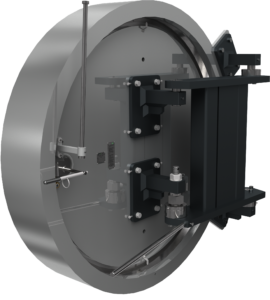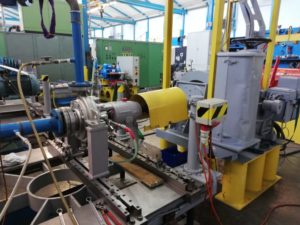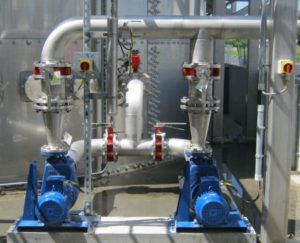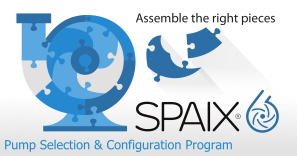Compact, Medium-resistant Pressure Sensor for Fluids in Motion from ViscoTec
Almost all of the pressure sensors in the market have a diaphragm made of stainless steel (e.g. flush-mounted pressure sensor) or made of other metallic or non-metallic materials such as ceramic. And most pressure sensors are add-on sensors and require adapters or similar pieces for their installation.
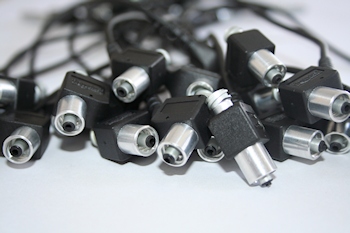
The fluid sensor flowplus16 guarantees optimum process safety for almost all applications in which media is transported (Image: ViscoTec)
This often results in dead space or undercuts. Dead spaces are usually very difficult to clean and can also distort pressure results. In addition, many liquids (anaerobic adhesives, organic compounds, body fluids such as blood, etc.) are either damaged or, as in the case of anaerobic adhesives, begin to react when they come into contact with metal. In dosing technology in particular, the combination of different materials plays a major role. Continuing with the example of anaerobic adhesives, when they come into contact with metal ions, they harden and achieve their maximum rigidity. In this case, the metallic surfaces or all metallic parts that come into contact with the anaerobic adhesive have to receive a special surface treatment to remove the metal ions from the surface. Pressure sensors also have to avoid contact with metal in a number of applications, which poses a great challenge. A pressure sensor whose two-sided, commercially available Luer Lock (male/female) is compatible with all popular dosing systems, has been developed to work with this type of threading. The market is also demanding ever greater and more stable process reliability for application optimization and automation. In order to ensure optimal process reliability, pressure must be monitored and evaluated on a regular basis. The dosing technology sector has been increasing its demands for greater reliability in existing processes, and this provided the impetus for developing this new pressure sensor.
The aim of this innovation for fluids in motion was to develop a compact, medium-resistant pressure sensor with no dead space. When the fluids in a system are set in motion, the pressure that results plays a key role: the fluid dynamics and the behaviour of the fluid can be evaluated with this physical variable. In dosing technology, changes in pressure can be used to determine various conclusions relating to the process. For example, that the dosing needle is gradually clogging, the distance to the substrate is unfavourable, or to detect the presence of micro-bubbles fluid. Pressure sensors should generate a standardised, compatible, linearised and temperature-compensating output signal - in our case, 0 - 10 V (or a digital signal, as required). The pressure sensor also contains an integrated measurement amplifier, which can convert a millivolt signal into a standardised volt signal (0 - 10 V). Because the measurement amplifier is already integrated into the electronic measuring unit, you no longer need an external transducer or booster.
flowplus was equal to the challenge of implementing the elastomer geometry in the enclosure and connecting the measuring cell with the elastomer. Another challenge was the vulcanisation of the very thin elastomer diaphragm within the very narrow tolerance range required. The flow channel has been fully spray-coated with FFKM (fully fluorinated elastomer). The elastomer used has optimal chemical resistance and a high temperature resistance that makes the material flexible enough to be used in a wide range of applications. The FFKM used here is FDA-certified and therefore, suitable for food industry use. The FFKM coating also acts as a remote seal that enables the rubber to transfer the force (pressure) to the measuring cell. Basically, the elastomer acts as a vehicle (carrier fluid) that transfers the force or pressure to the measuring cell. Many pressure sensors transfer the force via oil or a different medium.
Customers can easily expand and support their existing dosing systems with the new pressure sensor. Resistance and media/pressure sensor co-ordination will never be issues again. In the event of changes in the media or system, these pressure sensors are no problem to re-integrated because they are easy to clean and maintenance-free. The compact dimensions of the sensor also makes them easy to install or integrate in existing plants. The new sensor is very operator-friendly and highly standardised due to the two-sided Luer Lock. And the 0 - 10 V output signal is a standard signal in electronic evaluation, so the output can be processed and evaluated with any commercial PLC or intelligent evaluation system. The electronic measuring unit with amplifier functions with a Wheatstone bridge, delivering a mV signal that is forwarded by the integrated chip and treated to become the calibrated 0 - 10 V standard signal. This analog signal could also become a digital signal. The problem was to develop and implement the elastomer/measuring cell system and its operating principle into a reliable, serial product.

